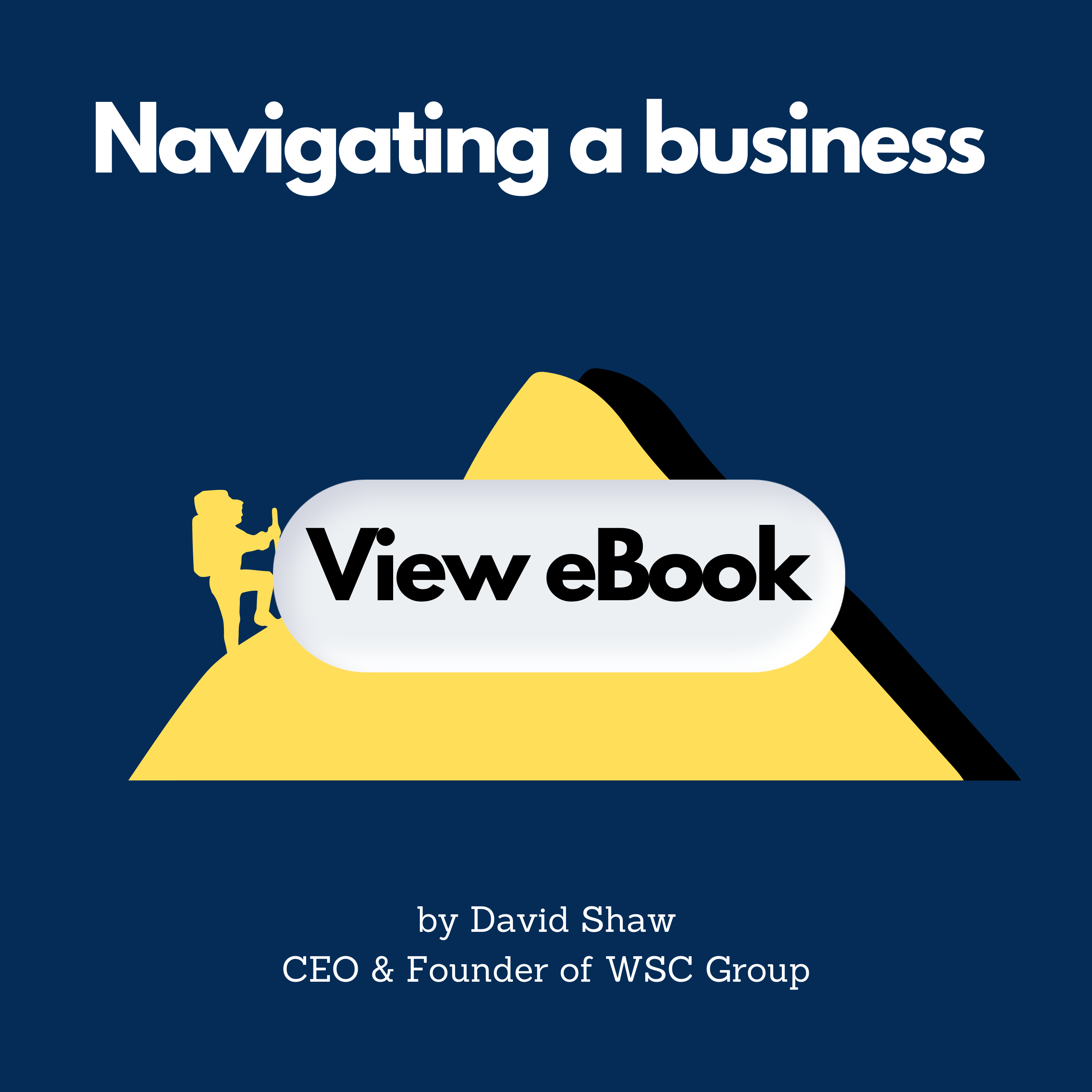May 2025
Economic and Market Overview
- Global: While the month began with constructive discussions and agreements between the US and some of its trading partners, uncertainty returned to the market after President Trump threatened to impose new tariffs on Europe and multiple large corporates such as Apple, Samsung and Mattel, and again near month-end as the Court of International Trade deemed the global tariffs to be “contrary to law.”
- Trade negotiations between the US and China were again in firm focus. On May 12, the two countries agreed to a 90-day tariff truce and reduced tariffs on one another by 115%. However, later in the month, China imposed export restrictions on critical rare earth elements, while the US doubled tariffs on steel & aluminium to 50%, reigniting tensions between them.
- Mid-month, market concern shifted briefly away from tariffs to bond market supply, with reverberations felt across all asset classes. Long-end bonds and equities sold off following tailing government bond auctions in both Japan and the US. The 30yr UST yield broke through the psychological 5% barrier to 5.09%, while the 10yr yield rose to 4.59%. Both recovered slightly from these levels but remained elevated through May.
- Gold oscillated between gains and losses on the month, trading inversely to global equity markets and seeing gains when bond market concerns came into focus. It appears to have held its status as a safe haven asset, and finished almost flat on the month at US $3289.25/oz.
Global manufacturing PMI dipped into contractionary territory, falling to 49.8 in April off the back of softer data from emerging markets. The global services PMI cooled to 50.8, in its lowest reading since late 2023.
US: Moody’s downgraded the US credit rating to Aa1 mid-May, sending 30yr Treasury yields to 5%. Equities were subdued following this news. Later that week, long-dated UST yields moved higher following the 20yr UST auction tail and put downward pressure on equities.
- The fiscal bill known as the “One Big Beautiful Bill” came into focus across bond and equity markets as it passed the House and moved to the Senate. After factoring in tariff revenue, the bill is broadly expected to leave the fiscal deficit largely unchanged at ~6% of GDP.
- Core CPI rose +0.237% MoM in April, softer than +0.3% MoM expectations. Services inflation was a modest +0.29% MoM.
- The US dollar looked to be recovering in the first half of the month, before selling off in the back half of May following additional tariff announcements that revived investor concerns regarding global trade policy. The DXY ended May down 20bps.
- The S&P500 gained +6.2% during May, reversing April’s losses and closing the month within 4% of its all-time highs set in February. The majority of gains came following the announcement of the US trade deal with China.
- The Fed left the cash rate unchanged during its meeting at the beginning of May. In the FOMC minutes released at the end of the month, Fed officials advised that they may soon face “difficult trade-offs”.
The US economy added +177k jobs during April, while the unemployment rate held steady at 4.2%.
Australia: The RBA cut rates by 25bps to 3.85%, with RBA governor Michelle Bullock more dovish than widely expected, advising during the press conference that the board considered a 50bp rate cut. Bullock revealed that the central bank was more concerned about a global economic slowdown than inflation.
- Bond yields fell following the press conference, with the threeyear government bond yield falling 16bps to 3.47% and the 10- year rate falling 9bps to 4.4% as money markets priced in a further two or three rate cuts during 2025.
- The ASX200 gained +3.8% during May, climbing quite steadily throughout the month.
- The AUD appreciated +0.8% against the USD during May to 0.6456 USD, with some strengthening occurring mechanically through USD weakness as investors sold off US assets.
- April CPI printed at +2.4% YoY, slightly ahead of consensus +2.3% YoY.
- The labour market added +89k jobs during April, greater than the expected +22.5k jobs, however the unemployment rate held steady at 4.1%.
Retail sales fell by a surprise -0.1% in April, significantly lower than the expected +0.3%. This brought YoY sales to +3.8%, down from +4.3% in March.
New Zealand: The RBNZ cut interest rates by -25bps during May, bringing the cash rate to 3.25%, with the committee citing a fall in inflation as the predominant reason for the interest rate cut.
- The NZ budget set operating spending for the fiscal year at NZ$1.3bn, the smallest amount in a decade. It also raised the default KiwiSaver contribution rate from 3% to 4% over the next three years.
Q1 retail sales increased by +0.8%, predominantly driven by increased pharmacy and motor vehicle sales.
Europe: European assets sold off slightly off the back of the announcement of potential 50% tariffs from the US, with the STOXX 600 fell -0.9% on the day. However, the tariff deadline was quickly pushed out to July 9 from June 1, and European assets were quick to reverse losses.
- The Euro saw a U-shaped pattern during the month, trading inversely to the USD and closing the month up +17bps at 1.1347 USD.
- The Euro area unemployment rate was stable at a record low of 6.2% in March, with the February number revised up from 6.1%.
- Headline inflation surprised slightly to the upside at +2.16% YoY, vs consensus +2.1% YoY.
The STOXX 600 gained +4.0% during May, climbing steadily throughout the month alongside broader global equity markets.
China: Mid-May, China and the US agreed to substantially reduce the tariffs they had imposed on one another, effectively lowering them by 115% for 90 days. The deal also established a mechanism for bilateral talks on trade and economics.
- The USD’s extended weakening prompted China’s central bank to alter how it manages its currency. Previously, the PBOC fixed the yuan at a stronger level than market forecasts but shifted this to fixed the daily reference rate at a slightly weaker level.
- Early May saw the PBoC roll out 10 supportive measures, including a 10bp policy rate cut.
- Manufacturing PMI increased +0.5 to 49.5, in line with consensus expectations with the rebound driven primarily by export orders. Non-manufacturing PMI dropped slightly to 50.3 from 50.4, below market expectations of 50.5.
Australian dollar
- The AUD ended the month +0.5% against the greenback, at 0.6431, posting its third consecutive month of gains.
- The AUD traded a narrow range over the month, hitting a low of 0.6358 on May 13, and a high of 0.6531 on May 26.
- Tariff news flow was the main driver of FX fluctuations.
- The AUD fell -0.5% on the day to 0.6424 USD after the 25bp rate cut from the RBA the dovish press conference that followed.
- April employment numbers printed on May 8 and beat expectations with 89k new jobs vs 22.5k expected. The unemployment rate remained unchanged at 4.1% and the participation rate continued to creep upwards, just shy of the 67.2% seen in January.
Australian equities
- The ASX200 ended May +3.8% higher than it began, with all GICS sectors in the green.
- Trading volume was elevated on the final trading day of the month due to MSCI index rebalancing, with market volume 2.8x the one-year average on this day.
- The tech sector saw the largest gain on the index during May, rising nearly 20% amid strong domestic earnings reports, as Wall Street peers moved higher, and following the acquisition of E2Open by WTC, which saw WTC advance +21.1% in May.
- The energy sector was next best, with an +8.6% gain. Uranium stocks led the charge, with BOE +25.2%, DYL +18.5% and PDN +6.5%. These uranium miners were supported by the news that the US plans to scale up its nuclear energy program.
- Utilities underperformed the index, with the sector up +0.3% in May. AGL weighed on the sector, down -4.5%.
- The financials complex saw a +4.0% gain in aggregate, with roughly three quarters of the stocks ending the month in the green. Major banks reported their half year earnings throughout May, which demonstrated little core or cash earnings growth. NIMs uniformly declined across the half. There was a trading divergence across the majors, with CBA and NAB posting gains, up +5.6% and 5.2% respectively, while ANZ and WBC saw losses on the month, down -2.8% and -0.9% each. JDO underperformed its peers, down -19.9% on the month after its FY26 initial guide fell short of market expectations.
- GDG was the largest percentage advancer in the financials sector, up +34.5% after BlackRock took a $25m stake in the company as part of a strategic alliance to design and distribute tailored retirement products.
- Gold stocks in aggregate performed better than the underlying spot price, which closed the month almost flat. EVN +13.0% and NST +9.4% outperformed, while NEM -1.7% underperformed.
- Real estate stocks performed well off the back of an additional rate cut from the RBA, as well as the dovish press conference, indicating that the rate cutting cycle may be faster and deeper than initially thought. The real estate sector gained +5.1% on the month, with DGT the largest percentage gainer, up +27.9%.
- GMG outperformed its peers, up +9.8% on the month after releasing a Q3 operational update and reaffirming its 9% EPS growth expectations for FY25.
- NUF fell -38.2% during the month after posting a softer than expected interim result amid challenging operating conditions in the industry.
Global equities
- The MSCI World Index advanced +5.7% over the course of May (in USD terms), with global equity indices rallying following the announcement that the US and China would lower tariffs on one another by 115%.
- The S&P500 outpaced the MSCI World move; advancing +6.2% over May. Gains were led by the tech sector which rose +10.8%. The NASDAQ closed +9.0% higher amid tech strength, while the Dow Jones saw a more moderate +3.6% rise.
- Six of the seven Mag7 companies saw sizeable rallies during May, with AAPL (-5.5%) the only exception. AAPL saw its stock price decline after Trump threatened to impose a tariff of “at least 25%” if its iPhones were not manufactured and built in the United States. The remaining Mag7 constituents rallied over the month; NVDA +24.1%, TSLA +22.8%, META +17.9%, MSFT +16.5%, AMZN +11.2% & GOOGL +8.2%.
- Meanwhile, the S&P Healthcare sector fell -5.7% in May; the only GICS group to close the month in the red. UnitedHealth saw the largest percentage decline of the group, down -26.6% after its CEO stepped down and the company withdrew its earnings guidance, partly due to rising medical costs.
- European equities also gained ground in May though pared gains following the news that the US was weighing a 50% tariff on EU goods. As at month end, the Stoxx600 had added +4.0% while the FTSE100 was up +3.3%. Burberry was a notable outperformer, rallying +43.0% over the month after announcing plans to cut 1,700 jobs (~20% of its workforce) to reduce costs.
- Asian equity markets saw gains across the board, with the key indices in Japan, Korea, Hong Kong and Taiwan posting gains above 5% on the month. The main bourses in Singapore, China and Brazil underperformed global peers, posting sub-2% gains. The MSCI Asia Pacific Index closed May +4.5% higher.
Property securities
- While tariff news continued to be the key talking point, Global property securities saw a decent May performance up ~1% in the month, similar to April (0.9%) but better than March (-2.0%).
- However, regional differences were large with North Americas region seeing a weaker May (-4.6%) after a weak April -2.2%, likely on concerns about the higher US debt on interest rates.
- Europe/UK continued performing strongly up +4.6% in may, following an extremely strong April with +10.3% return, potentially reflecting investors looking for alternatives and the UK/European REITs being too cheap to begin with despite a resilient rental backdrop.
- The Asia Pacific region had a solid month of +1.0% returns, backing up a strong performance in April, up 4.5%. Lower rates and limited growth downside expectations from tariffs were key.
- Locally, AREITs had another strong month up ~5% (after +6% in April), primarily driven by the rally in GMG as data center concerns eased.
Fixed income and credit
- Global bond supply remained a focus throughout May – this saw equities under pressure when yields rose.
- The UST curve steepened and swap spreads cheapened following Moody’s credit downgrade of the US mid-month.
- Shortly after, the 20yr UST auction tail sent long-dated UST yields higher. In the same day, the 20yr JGB auction saw a 13bp tail, the worst tail since 1987. 30yr UST yields rose 12bps to 5.09%, a clean break of the 5% psychological level. 10yr UST yields rose 11bps to 4.59%.
- US 2yr Treasuries yield ended May +30bps higher, as US trade deals lessened market expectations for a deep rate cut cycle.
- US 10yr Treasuries ended the month +24bps higher at 4.403%, recovering from more elevated yields earlier in the month. US 30yr Treasury yields ended +25bps higher in May, closing at 4.932% after a brief break above 5% mid-month.
- Following a dovish press conference with the RBA after the 25bp rate cut, the AU rates market is pricing in a further 3 rate cuts before the end of the year.
- US investment grade credit spreads ended the month -11bps tighter, after tightening significantly after the US-China trade deal was announced. HY spreads followed the same trend, finishing May -55bps tighter.

Important information
This material is for general information purposes only. It does not constitute investment or financial advice and does not take into account any specific investment objectives, financial situation or needs. This is not an offer to provide asset management services, is not a recommendation or an offer or solicitation to buy, hold or sell any security or to execute any agreement for portfolio management or investment advisory services and this material has not been prepared in connection with any such offer. Before making any investment decision you should consider, with the assistance of a financial advisor, your individual investment needs, objectives and financial situation.
We have taken reasonable care to ensure that this material is accurate, current, and complete and fit for its intended purpose and audience as at the date of publication. No assurance is given or liability accepted regarding the accuracy, validity or completeness of this material and we do not undertake to update it in future if circumstances change.
To the extent this material contains any expression of opinion or forward-looking statements, such opinions and statements are based on assumptions, matters and sources believed to be true and reliable at the time of publication only. This material reflects the views of the individual writers only. Those views may change, may not prove to be valid and may not reflect the views of everyone at First Sentier Investors.
About First Sentier Investors
References to ‘we’, ‘us’ or ‘our’ are references to First Sentier Investors, a global asset management business which is ultimately owned by Mitsubishi UFJ Financial Group. Certain of our investment teams operate under the trading names AlbaCore Capital Group, FSSA Investment Managers, Stewart Investors, RQI Investors and Igneo Infrastructure Partners, all of which are part of the First Sentier Investors group.
We communicate and conduct business through different legal entities in different locations. This material is communicated in:
- Australia and New Zealand by First Sentier Investors (Australia) IM Ltd, authorised and regulated in Australia by the Australian Securities and Investments Commission (AFSL 289017; ABN 89 114 194311).
- European Economic Area by First Sentier Investors (Ireland) Limited, authorised and regulated in Ireland by the Central Bank of Ireland (CBI reg no. C182306; reg office 70 Sir John Rogerson’s Quay, Dublin 2, Ireland; reg company no. 629188).
- Hong Kong by First Sentier Investors (Hong Kong) Limited and has not been reviewed by the Securities & Futures Commission in Hong Kong. First Sentier Investors, FSSA Investment Managers, Stewart Investors, RQI Investors and Igneo Infrastructure Partners are the business names of First Sentier Investors (Hong Kong) Limited.
- Singapore by First Sentier Investors (Singapore) (reg company no. 196900420D) and this advertisement or material has not been reviewed by the Monetary Authority of Singapore. First Sentier Investors (registration number 53236800B), FSSA Investment Managers (registration number 53314080C), Stewart Investors (registration number 53310114W), RQI Investors (registration number 53472532E) and Igneo Infrastructure Partners (registration number 53447928J) are the business divisions of First Sentier Investors (Singapore).
- United Kingdom by First Sentier Investors (UK) Funds Limited, authorised and regulated by the Financial Conduct Authority (reg. no. 2294743; reg office Finsbury Circus House, 15 Finsbury Circus, London EC2M 7EB).
- United States by First Sentier Investors (US) LLC, authorised and regulated by the Securities Exchange Commission (RIA 801-93167)
- other jurisdictions, where this document may lawfully be issued, by First Sentier Investors International IM Limited, authorised and regulated in the UK by the Financial Conduct Authority (FCA ref no. 122512; Registered office: 23 St. Andrew Square, Edinburgh, EH2 1BB; Company no. SC079063).
To the extent permitted by law, MUFG and its subsidiaries are not liable for any loss or damage as a result of reliance on any statement or information contained in this document. Neither MUFG nor any of its subsidiaries guarantee the performance of any investment products referred to in this document or the repayment of capital. Any investments referred to are not deposits or other liabilities of MUFG or its subsidiaries, and are subject to investment risk, including loss of income and capital invested
© First Sentier Investors Group
IMPORTANT INFORMATION
This document has been prepared by Count Limited (Count) ABN 11 126 990 832. While care has been taken in the preparation of this market update, no liability is accepted by Count, its related entities, agents and employees for any loss arising from reliance on this market update. Count advisers are authorised representatives of Count.













